Are Solar Panels Worth It?
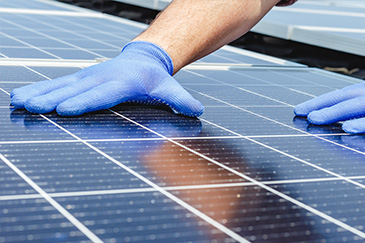
We all know that solar energy is good for the environment, but the question of whether installing solar panels is good for your wallet can be less straightforward. Solar electricity offers major energy savings, and that has to be balanced against the upfront costs of having a solar array installed. So how can you figure out if solar panels are a good deal?
Fortunately, answering that question isn’t too complicated – though it does take some research effort. Buying solar panels is a high-involvement purchase, and if you put in the time, you can move forward with the confidence that you’re making a smart investment in both your home and the planet.
Do Solar Panels Save Money?
There are four major steps to assessing the value of installing solar panels:
- Analyze your current electric bills
- Determine the sunlight potential of your home
- Estimate the cost of solar panel installation
- Figure out how to finance the project
Using our solar calculator gives you personalized savings and instant cost estimates.
1. Check Your Electric Bills
Start by taking a thorough look at your latest electricity bill. See how much you’re paying per kilowatt-hour (kWh) and whether that rate has changed over time. Your bill may show historical data about your kWh rate and usage over the past several months, but if it doesn’t, you may be able to access this and other data by logging into your online customer account with your electrical supplier or utility.
To see if the rate you’re paying is higher than average, compare your electricity costs to the averages calculated by the U.S. Energy Information Administration. This data is broken down by region and state, allowing you to determine not only whether you’re paying more than average in your area, but also how your electricity prices compare to those around the country.
If your analysis shows that you’re already getting a good price for electricity, the financial gains you can expect from installing solar may be smaller. But if you’re paying prices on the high end, solar may help get those costs under control.
2. Assess Your Sunlight Potential
Most residential rooftops in the U.S. are great places to install solar panels. But some can produce more electricity than others, and much of that difference comes down to the amount of sunlight each roof receives.
Climate and weather matter to a certain extent. If you live in an especially sunny region like the Southwest or Southeast, your solar array may produce more electricity than those in cloudier regions like the Upper Midwest or Pacific Northwest. But solar panels still generate electricity on cloudy days, and installers can typically design installations even in cloudy regions that will take a significant bite out of a home’s energy needs.
Other sources of shade tend to be the more significant obstacles. If you live in an especially hilly or mountainous area, some homes may be positioned in permanently shady areas. Trees, tall buildings, billboards and water towers are other common sources of shade that can limit the amount of sunshine a rooftop receives. Trees can be trimmed, if you’re willing to make that adjustment, but more permanent sources of shade may mean that solar is a bad fit.
A qualified solar installer can assess your home for suitability for solar, but you can get an idea of your solar potential with a few clicks by using free online tools like Project Sunroof. This tool, designed by Google, uses Google Earth images to help you estimate both your annual sunshine potential and your available rooftop space for solar panel installation.
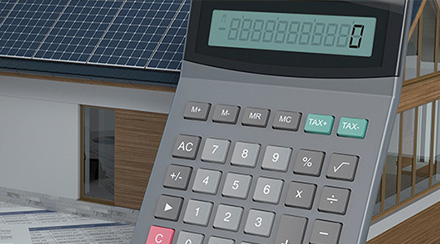
3. Get Cost Estimates and Check for Tax Breaks
If you’re still considering solar after reviewing your electricity bills and evaluating your rooftop sunlight exposure, the next step is to estimate the total cost of solar panel installation. The cost can vary quite a bit depending on the number and type of solar panels you want to install, but most homeowners will find that installation of a 6 kW solar array will cost between $13,000 and $20,000.
The best way to estimate the total cost is to research solar installers near you and request at least two price estimates. But there are other factors to consider, specifically tax credits and other financial incentives that may help offset the cost of solar installation. There is a federal solar tax credit that allows homeowners to deduct a portion of their solar installation costs from their federal taxes, the rates and availability of which are determined by Congress. But there may also be additional tax credits or incentives offered at the state, county or local level. Solar installers are typically aware of what incentives are available and can help you identify opportunities to reduce your overall cost.
It’s common for solar installers to perform brief home inspections prior to offering written cost estimates. This will include an inspection of the roof and main electrical panel, which may require repair or replacement. Electrical panels must be replaced if they’re in disrepair or upgraded if they’re insufficient to handle the power demands of a solar array, and these services can cost anywhere from a few hundred dollars to about $2,500.
The roof may also need to be replaced if it is in poor condition or if the existing roofing materials cannot accommodate solar panels. This can significantly increase the cost of the total project – roof replacement costs vary by roof size and type, but the average roof replacement costs around $8,000.
4. Factor In Financing
Because solar installation usually costs several thousand dollars, most homeowners choose to finance their installations. Solar installers frequently offer financing assistance, usually through third-party lenders. But if you have an existing relationship with a bank, credit union or other lending institution, you may find that they have competitive terms on solar loans, home improvement loans, personal loans or home equity lines of credit. Learn more about financing options in our article about how to finance solar panels.
Considering all these factors together – your monthly electricity expenses, your sunshine potential, the cost of installation and your financing options – should give you a good sense of whether you can afford solar installation and how long it will take for your investment to pay for itself.
Additional Benefits of Solar
These calculations lead many homeowners to decide that going solar is a smart investment. But the benefits of solar power go far beyond monthly energy savings. A 2019 study by Zillow found that homes with solar panels sold for 4.1 percent more on average than comparable homes that lacked them.
Solar power can also keep your home running in the event of a power outage, especially when combined with a home battery that stores the free energy you generate. And of course, adding solar is great for the environment, reducing greenhouse gas emissions and countering the effects of climate change.
Looking for Something Specific?
Select a category to find resources for topics that interest you.
Select Category

Related Articles:
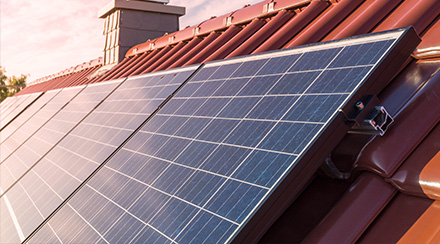
What Is Solar Energy and How Does it Work?
Thanks to rapidly advancing technology, a growing share of our energy comes from renewable sources like wind, hydropower and solar. Learn about solar energy and how it provides for homes and communities.
Read Article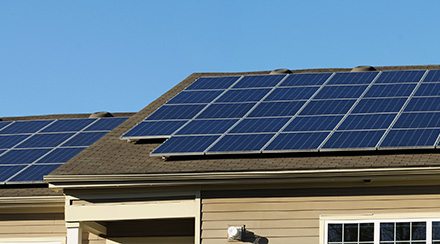
How Do Solar Panels Work?
Rooftop solar panels are among the most visible symbols of a new energy future that is cleaner, healthier and more renewable. But do you know how solar panels work?
Read Article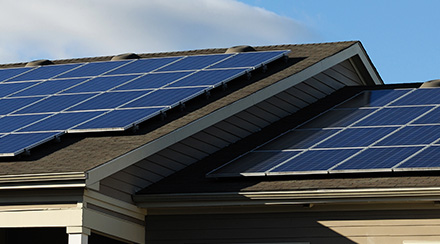
The Different Types of Solar Panels
When deciding what type of solar panel is best for your home, it’s worth taking the time to weigh the pros and cons of each panel type against your budget, climate and energy needs.
Read ArticleMost Popular Articles

Residential Solar Panels
Want to produce your own solar energy? NRG Solar+ guides you through how rooftop solar works and what it could look like for your home. Learn More.
Are Solar Panels Worth It?
We all know that solar energy is good for the environment, but the question of whether installing solar panels is good for your wallet can be less straightforward. Solar electricity offers major energy savings, and that has to be balanced against the upfront costs of having a solar array installed. So how can you figure out if solar panels are a good deal?
Fortunately, answering that question isn’t too complicated – though it does take some research effort. Buying solar panels is a high-involvement purchase, and if you put in the time, you can move forward with the confidence that you’re making a smart investment in both your home and the planet.
Do Solar Panels Save Money?
There are four major steps to assessing the value of installing solar panels:
- Analyze your current electric bills
- Determine the sunlight potential of your home
- Estimate the cost of solar panel installation
- Figure out how to finance the project
Using our solar calculator gives you personalized savings and instant cost estimates.
1. Check Your Electric Bills
Start by taking a thorough look at your latest electricity bill. See how much you’re paying per kilowatt-hour (kWh) and whether that rate has changed over time. Your bill may show historical data about your kWh rate and usage over the past several months, but if it doesn’t, you may be able to access this and other data by logging into your online customer account with your electrical supplier or utility.
To see if the rate you’re paying is higher than average, compare your electricity costs to the averages calculated by the U.S. Energy Information Administration. This data is broken down by region and state, allowing you to determine not only whether you’re paying more than average in your area, but also how your electricity prices compare to those around the country.
If your analysis shows that you’re already getting a good price for electricity, the financial gains you can expect from installing solar may be smaller. But if you’re paying prices on the high end, solar may help get those costs under control.
2. Assess Your Sunlight Potential
Most residential rooftops in the U.S. are great places to install solar panels. But some can produce more electricity than others, and much of that difference comes down to the amount of sunlight each roof receives.
Climate and weather matter to a certain extent. If you live in an especially sunny region like the Southwest or Southeast, your solar array may produce more electricity than those in cloudier regions like the Upper Midwest or Pacific Northwest. But solar panels still generate electricity on cloudy days, and installers can typically design installations even in cloudy regions that will take a significant bite out of a home’s energy needs.
Other sources of shade tend to be the more significant obstacles. If you live in an especially hilly or mountainous area, some homes may be positioned in permanently shady areas. Trees, tall buildings, billboards and water towers are other common sources of shade that can limit the amount of sunshine a rooftop receives. Trees can be trimmed, if you’re willing to make that adjustment, but more permanent sources of shade may mean that solar is a bad fit.
A qualified solar installer can assess your home for suitability for solar, but you can get an idea of your solar potential with a few clicks by using free online tools like Project Sunroof. This tool, designed by Google, uses Google Earth images to help you estimate both your annual sunshine potential and your available rooftop space for solar panel installation.
3. Get Cost Estimates and Check for Tax Breaks
If you’re still considering solar after reviewing your electricity bills and evaluating your rooftop sunlight exposure, the next step is to estimate the total cost of solar panel installation. The cost can vary quite a bit depending on the number and type of solar panels you want to install, but most homeowners will find that installation of a 6 kW solar array will cost between $13,000 and $20,000.
The best way to estimate the total cost is to research solar installers near you and request at least two price estimates. But there are other factors to consider, specifically tax credits and other financial incentives that may help offset the cost of solar installation. There is a federal solar tax credit that allows homeowners to deduct a portion of their solar installation costs from their federal taxes, the rates and availability of which are determined by Congress. But there may also be additional tax credits or incentives offered at the state, county or local level. Solar installers are typically aware of what incentives are available and can help you identify opportunities to reduce your overall cost.
It’s common for solar installers to perform brief home inspections prior to offering written cost estimates. This will include an inspection of the roof and main electrical panel, which may require repair or replacement. Electrical panels must be replaced if they’re in disrepair or upgraded if they’re insufficient to handle the power demands of a solar array, and these services can cost anywhere from a few hundred dollars to about $2,500.
The roof may also need to be replaced if it is in poor condition or if the existing roofing materials cannot accommodate solar panels. This can significantly increase the cost of the total project – roof replacement costs vary by roof size and type, but the average roof replacement costs around $8,000.
4. Factor In Financing
Because solar installation usually costs several thousand dollars, most homeowners choose to finance their installations. Solar installers frequently offer financing assistance, usually through third-party lenders. But if you have an existing relationship with a bank, credit union or other lending institution, you may find that they have competitive terms on solar loans, home improvement loans, personal loans or home equity lines of credit. Learn more about financing options in our article about how to finance solar panels.
Considering all these factors together – your monthly electricity expenses, your sunshine potential, the cost of installation and your financing options – should give you a good sense of whether you can afford solar installation and how long it will take for your investment to pay for itself.
Additional Benefits of Solar
These calculations lead many homeowners to decide that going solar is a smart investment. But the benefits of solar power go far beyond monthly energy savings. A 2019 study by Zillow found that homes with solar panels sold for 4.1 percent more on average than comparable homes that lacked them.
Solar power can also keep your home running in the event of a power outage, especially when combined with a home battery that stores the free energy you generate. And of course, adding solar is great for the environment, reducing greenhouse gas emissions and countering the effects of climate change.
Looking for Something Specific?
Select a category to find resources for topics that interest you.
Select Category

Related Articles:

What Is Solar Energy and How Does it Work?
Thanks to rapidly advancing technology, a growing share of our energy comes from renewable sources like wind, hydropower and solar. Learn about solar energy and how it provides for homes and communities.
Read Article
How Do Solar Panels Work?
Rooftop solar panels are among the most visible symbols of a new energy future that is cleaner, healthier and more renewable. But do you know how solar panels work?
Read Article
The Different Types of Solar Panels
When deciding what type of solar panel is best for your home, it’s worth taking the time to weigh the pros and cons of each panel type against your budget, climate and energy needs.
Read ArticleMost Popular Articles

Residential Solar Panels
Want to produce your own solar energy? NRG Solar+ guides you through how rooftop solar works and what it could look like for your home. Learn More.







